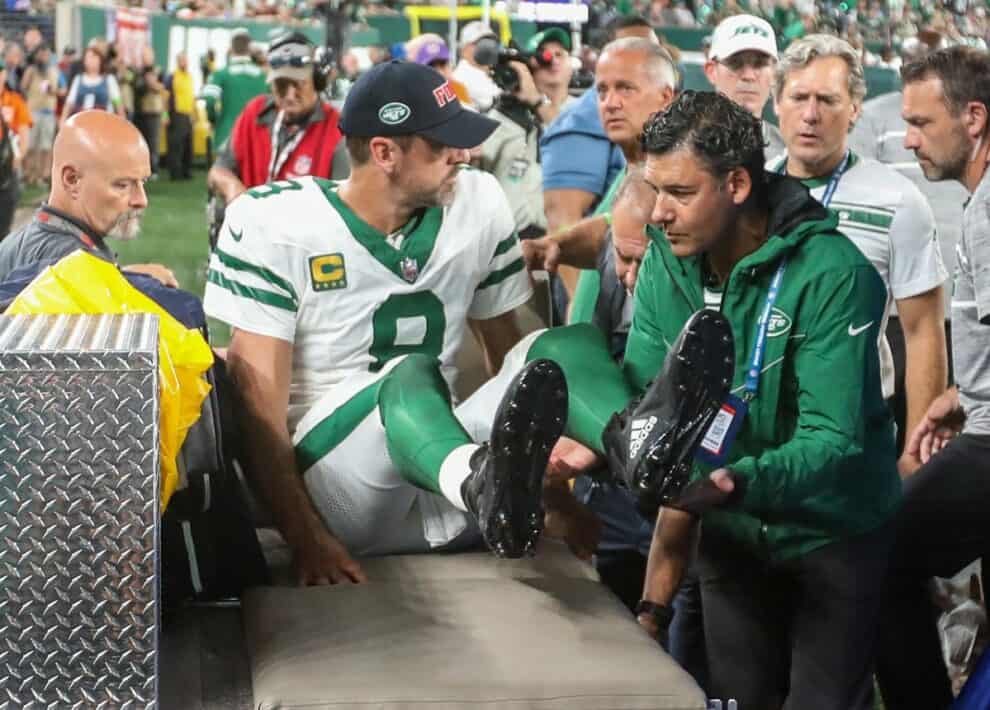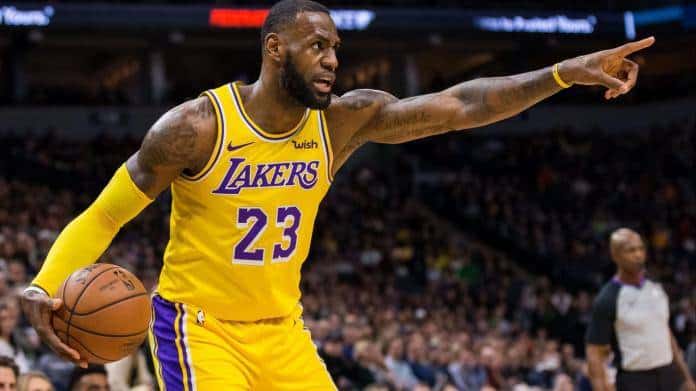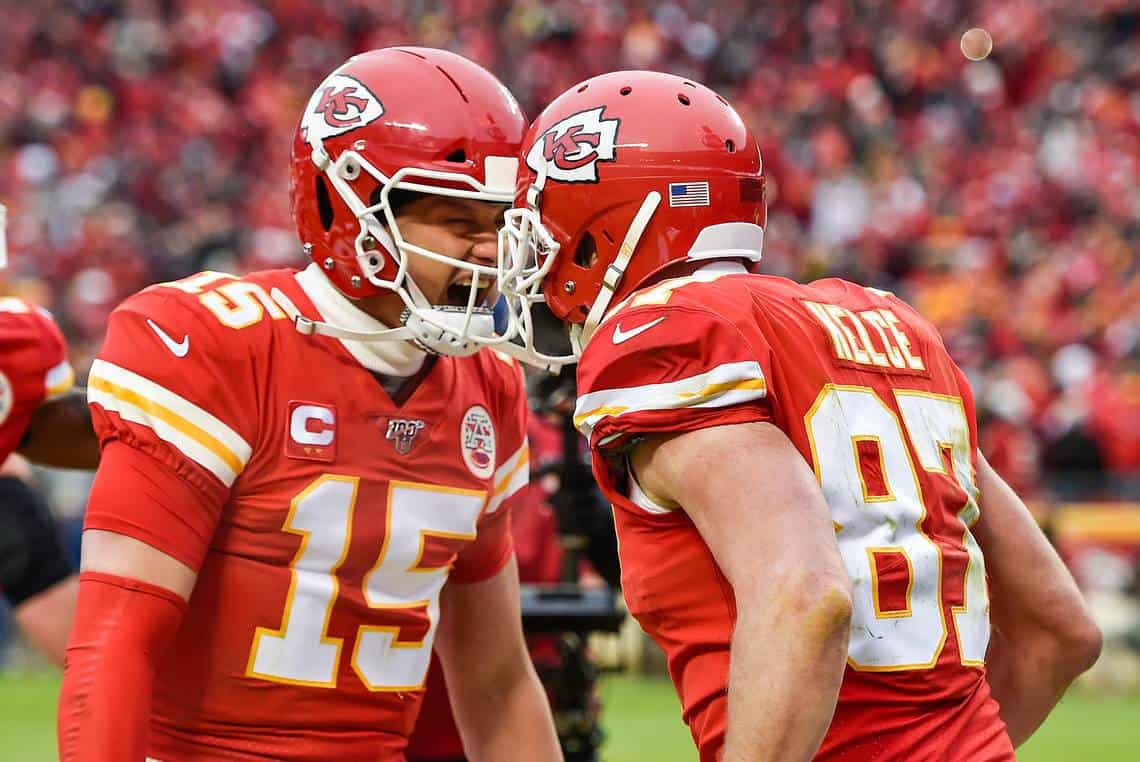
- Achilles Tendon injuries are common in high intensity, contact sports.
- This injury is painful and requires a lengthy rehab.
- The New York Jets lost Aaron Rodgers for the season with an Achilles Tendon injury.
It didn’t take long for NFL observers to realize that putting a 39 year old NFL quarterback behind a suspect offensive line isn’t a particularly good idea. I’ve been watching NFL football for a long time and Aaron Rodgers’ Achilles tendon rupture is definitely one of the most shocking injuries I can recall. It wasn’t so much the severity than it was the suddenness–four plays into his tenure with the New York Jets. Within minutes, the biggest off season storyline in the NFL was up in smoke.
In this article, we’ll look at Achilles tendon injuries. Due to Rodgers’ high profile injury, it’s received a fair amount of coverage throughout the mainstream and sports media. As you’re no doubt aware, it is a painful injury with a long and difficult rehab time.
The Achilles tendon, connecting the calf muscles to the heel bone, is the thickest and strongest tendon in the human body. It’s responsible for the push-off during walking and running and is thus crucial for professional athletes. However, its importance also makes it vulnerable to injuries, especially among those in high-intensity sports. It’s also a fairly common occurrence in sports that require a lot of lateral movement.
An Achilles tendon injury can range from mild strains to a complete rupture. A rupture sounds like a pop and is often mistaken for a snap or hit. Thanks to the advent of hi-def TV, you can sometimes see the tendon pop on instant replay. The aftermath is immediate pain, swelling, and difficulty walking. In the case of professional athletes, a complete rupture is devastating, not just due to pain but also the lengthy recovery time it demands.
Older athletes are more susceptible to Achilles tendon injuries due to the fact that it’s often a result of accumulated wear and tear. At a point, what would usually be fairly routine contact can injure the tendon or–in Rodgers’ case–cause it to rupture. Another cause is tight muscles, especially tight calf muscles. Another factor is a sudden increase in the intensity of strain put on the tendon. The body reacts differently in a legitimate competitive situation (eg: a regular season game) than in training. It calls into question the wisdom of letting veteran quarterbacks sit out preseason games to ‘protect them from injury’.
Minor Achilles tendon injuries are easy to treat with the basics: rest, ice, elevation, compression. Once the pain is gone, it’s prudent to focus on strengthening and flexibility exercises. Unfortunately, Rodgers doesn’t have it that easy. In the case of a complete rupture, especially for athletes wanting to return to their sport at the same level of competition, surgery is usually the only option. The procedure involves stitching the torn tendon back together. Post-surgery, the leg is usually immobilized in a cast or walking boot to allow the tendon to heal.
The recovery time from an Achilles tendon injury can be lengthy, especially for athletes. Non surgical recovery time ranges from a few weeks to a few months. Surgical recovery time is a different deal completely. The initial post surgery healing phase can last up to 12 weeks, during which the foot is immobilized. After this period, the athlete begins a rehabilitation program. The entire recovery process, from surgery to returning to full athletic activity, can take anywhere from 6 to 12 months. The timeline varies based on the severity of the injury, the athlete’s overall health, age, and adherence to rehabilitation protocols.









